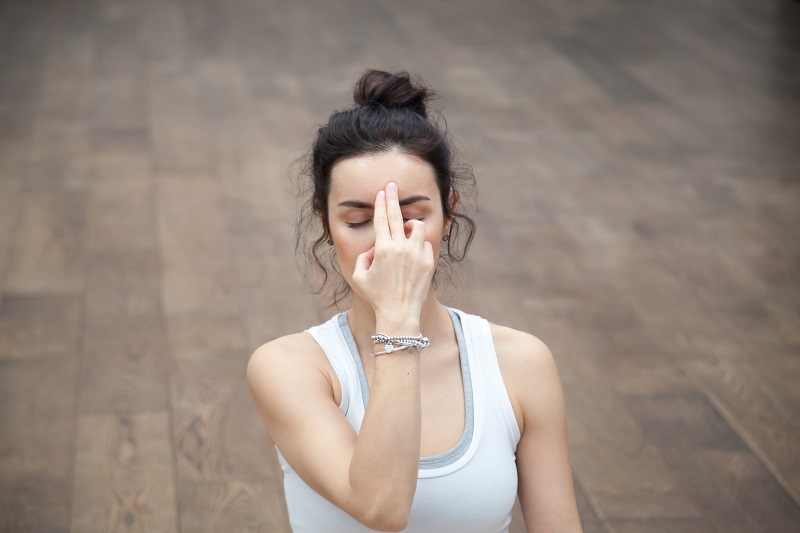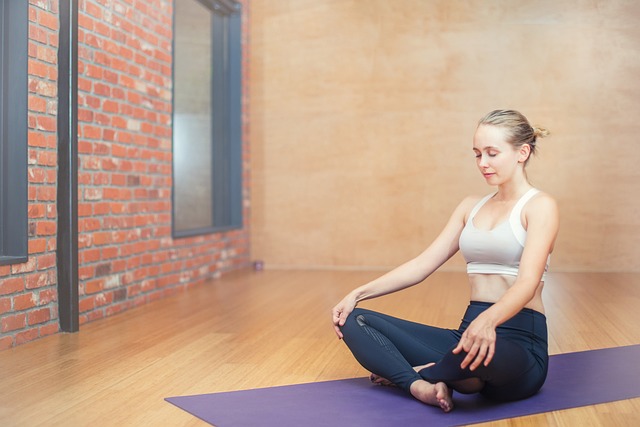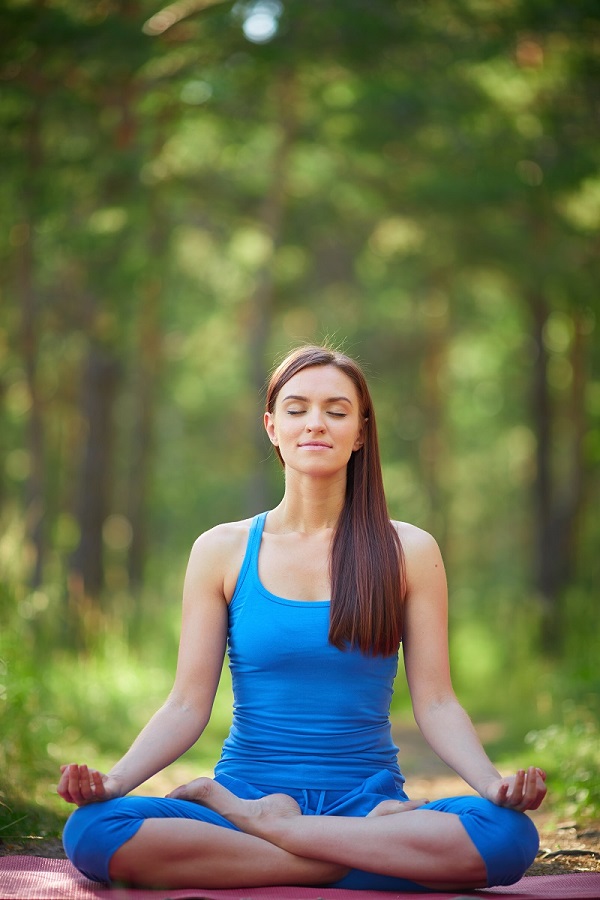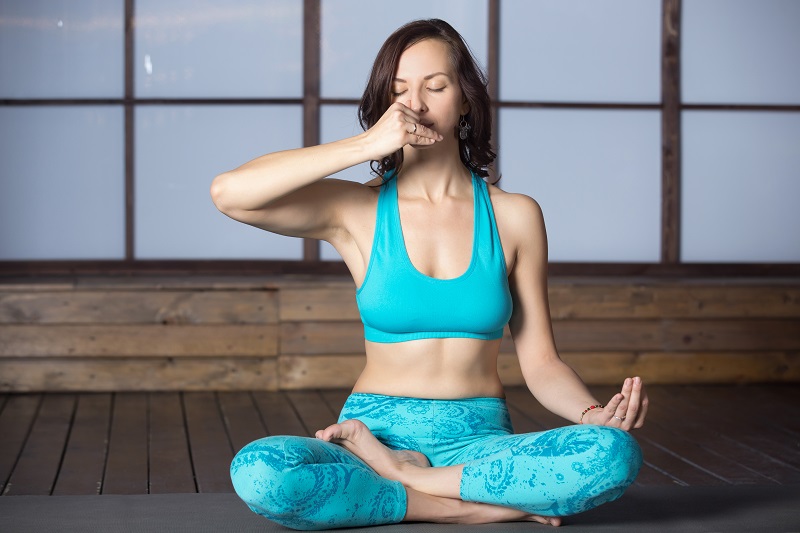
Imagine a simple, yet immensely powerful practice that could potentially transform your life, all through the act of breathing.
Pranayama, an ancient yogic technique, hold this extraordinary potential.
The statistics surrounding pranayama are nothing short of astonishing, According to recent research, over 70% of individuals who regularly engage in pranayama breathing exercises report experiencing a significant reduction in stress and increased sense of relaxation. If you are seeking a path to better well-being, this practice could be the gateway to a calmer, more centred you.
We will explore in the world of Pranayama – the types of pranayama and benefits which makes your life better.
Pranayama is not just a fleeting trend, it’s deeply rooted in tradition. Originating in India thousands of years ago, this practice has not only endured but also evolved into global phenomenon. Its longevity and sustained relevance speak to its authenticity and effectiveness.
Pranayama is a practice that people from all around the world have embraced regardless of their cultural background. Its long history shows that it holds valuable and enduring wisdom that can benefit everyone.
Pranayama breathing exercises impact goes beyond mere statistics, it offers a myriad of tangible benefits for those who embrace it. The reduction in stress levels and increased relaxation reported by practitioners can be a gateway to better mental health.
Beyond that pranayama breathing exercises enhance lung function, increases vitality, improves concentration and contributes to emotional well-being. Whether you are seeking improved mental clarity, physical health or sense of inner peace pranayama has something to offer you.
Breathing exercises (Box breathing, 4-7-8 breathing, Deep abdominal breathing…) are broader category that encompasses various practices aimed at different goals.
Pranayama breathing exercises, on the other hand are a specific subset of breathing exercises with their own unique goals and techniques, deeply rooted in the philosophy and tradition of yoga.
What is pranayama and its benefits

Purpose: Pranayama is a more specialized practice focused specifically on breath control and the regulation of prana (vital life force or energy). The primary purpose of pranayama is to manipulate the flow of prana within the body and to achieve various physical, mental and spiritual benefits.
Techniques: Pranayama involves more advanced and specific breathing techniques. These exercise focused on controlling the duration, rhythm and retention of the breath and they may include practices like Kapalabhati (skull-shinning breath), Bhastrika (bellow-breath), Nadi-Shodhana (alternate nostril breathing). Pranayama techniques are designed to influence the flow of prana within the body.
Philosophy: Pranayama is deeply rooted in the philosophy of yoga and the concept of prana, which is believed to be the life force that sustains the body and mind. Pranayama practices are aimed at harnessing and directing the vital energy to promote physical health, mental clarity and spiritual growth.
Why pranayama is powerful
Pranayama, the practice of controlled and conscious breathing offers a wide range of physical, mental and emotional benefits.
The primary objectives of pranayama are to regulate and control the breath, improve respiratory health and reduce stress and anxiety. By slowing down and deepening the breath, pranayama activates the body’s relaxation response, promoting emotional balance, concentration and cognitive clarity.
Pranayama contributes to physical health by supporting digestion and detoxification, increase vitality and serves as a preparatory practice for meditation, enhancing self-awareness.
Here are some
Physical key benefits of pranayama
- Improved respiratory function: Pranayama techniques help enhance lung capacity, strengthen respiratory muscles and improved oxygen exchange, leading to better overall respiratory health.
- Stress reduction: Pranayama activates the relaxation response by stimulating the parasympathetic nervous system, which helps reduce stress and anxiety.
- Enhanced energy levels: Pranayama helps balance and increase the flow of prana (life force of energy), leading to increase vitality and energy.
- Blood pressure Regulation: Some pranayama practices associated with blood pressure regulation and may help manage hypertension.
- Detoxification: Deep and controlled breathing helps remove toxins from the body and enhances the body’s natural detoxification process.
Mental key benefits of pranayama for brain

- Increased oxygen supply: Pranayama techniques focus on deep, controlled breathing which improves oxygenation of the blood. This increased oxygen supply nourishes brain cells, enhancing cognitive function and mental clarity.
- Enhanced concentration and focus: Regular pranayama practice can sharpen your concentration and focus by calming the mind and reducing mental chatter. This is especially valuable for tasks that requires sustain attention.
- Improved memory: Pranayama, by calming the mind and enhancing cognitive function, may improve memory retention and recall. It can help in both short-term and long-term memory function.
- Emotional balance: Pranayama promotes emotional well –being by regulating emotions and reducing mood swings. It can provide a greater sense of emotional balance.
- Reduction of negative thoughts: The calming effect of pranayama techniques can help reduce negative thoughts and the symptoms of conditions like depression and anxiety.
- Improved sleep quality: Certain pranayama exercises, when practice before bedtime can lead to better sleep quality and help with insomnia. Restful sleep is essential for overall cognitive function and mental health.
- Enhanced meditation: Pranayama serves as an excellent preparatory practice for meditation by calming the mind and preparing it for deeper contemplation. It can lead to more profound meditative experience.
The different types of pranayama and their benefits, such as calming the mind, energizing the body or enhancing focus.
For example, Anulom vilom can improve lung capacity and reduce stress, while kapalbhati aids in cleansing the respiratory system and invigorating the mind. Bhramari pranayama with its soothing humming sound, is excellent for relieving anxiety and promoting relaxation. Nadi shodhana is renowned for its balancing effects on the nervous system.
Understanding and incorporating these various pranayama techniques into your daily routine can help you to live healthier life.
Pranayama encompasses a variety of breathing techniques, each offering unique benefits. Here are some main types of pranayama that are beneficial for enhancing well –being.
Different types of pranayama and benefits

PS: freepik.com
- Kapalbhati (skull-shining breath): Increases lung capacity, energizes the body and improves mental alertness.
- Bhramari (humming bee breath): Relieves stress and anxiety calms the mind and enhances concentration.
- Ujjayi (Ocean breath): Encourages deep breathing, reduces throat irritation and supports mindfulness.
- Sheetali (cooling breath): Cools the body, reduces anger and soothes the nervous system.
- Bhastrika (Bellow breath): Increases energy, improves digestion and enhances the flow of prana (life force).
- Alternate nostril breathing: promotes relaxation, reduces stress and enhances focus.
- Sheetkari (hissing breath): Relieves thirst, cools the body and minimizes stress.
Studying the types of pranayama and benefits provides valuable insights into the profound impact of breath control on our physical and mental health.
Many beginners ask, what happens if I do pranayama every day, the answer lies in the potential for improved respiratory health, reduced stress and enhanced mental clarity with consistent practice.
3 types of pranayama
- Anulom-Vilom (Alternate nostril breathing): Anulom-Vilom involves inhaling through one nostril while blocking the other, then exhaling through the blocked nostril and switching sides. This practice is excellent for reducing stress and anxiety, balancing the left and right hemisphere of the brain, leading to improve concentration and mental clarity.
- Kapalbhati (skull-shining breath): Kapalbhati is a vigorous breathing exercise that focuses on forceful exhalations through the nose, while inhalation is passive. It not only increases lung capacity but also clears the respiratory passages, boost circulation. The pranayama is renowned for its ability to awaken the mind and improve digestion.
- Bhramari (humming bee breath): Bhramari involves producing a gentle humming sound like a bee while exhaling. This practice helps in reducing stress, anxiety and anger. It has calming effect on mind. The vibration created by humming sound can also soothe the nervous system, offering sense of inner peace.
Many beginners often wonder, how many types of pranayama are there, as they delve into the rich world of yoga and breath control..
There are numerous types of pranayama each with its unique techniques, benefits and purposes.
Here are some most commonly practice pranayama.
Nadi shodhana pranayama, Bhramari pranayama, Ujjayi pranayama, Kapalbhati pranayama, Bhastrika pranayama, Sheetali pranayama, Sheetkari pranayama, Surya bhedana, Chandra bhedana, Plavini pranayama, Agnisar kriya, Sitali Bhastrika pranayama, Sama vritti